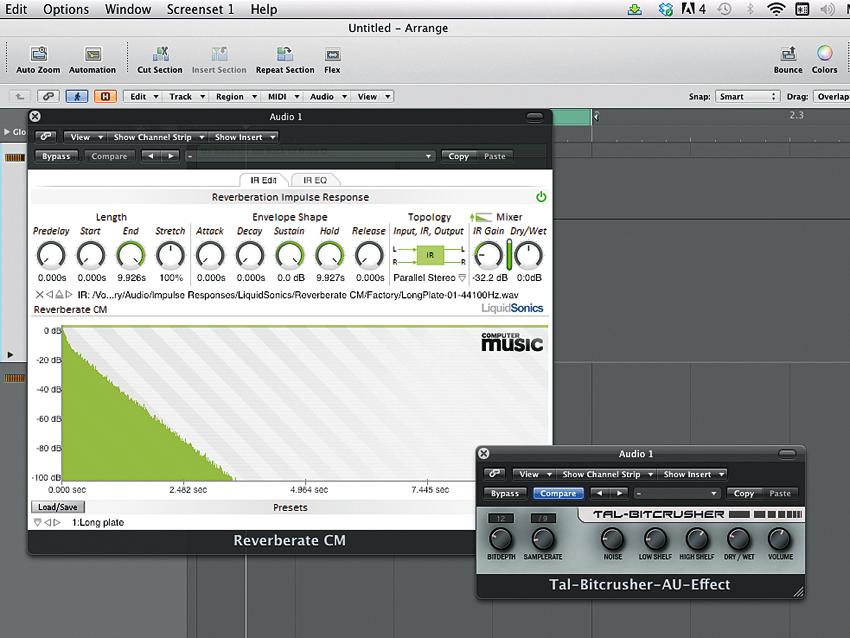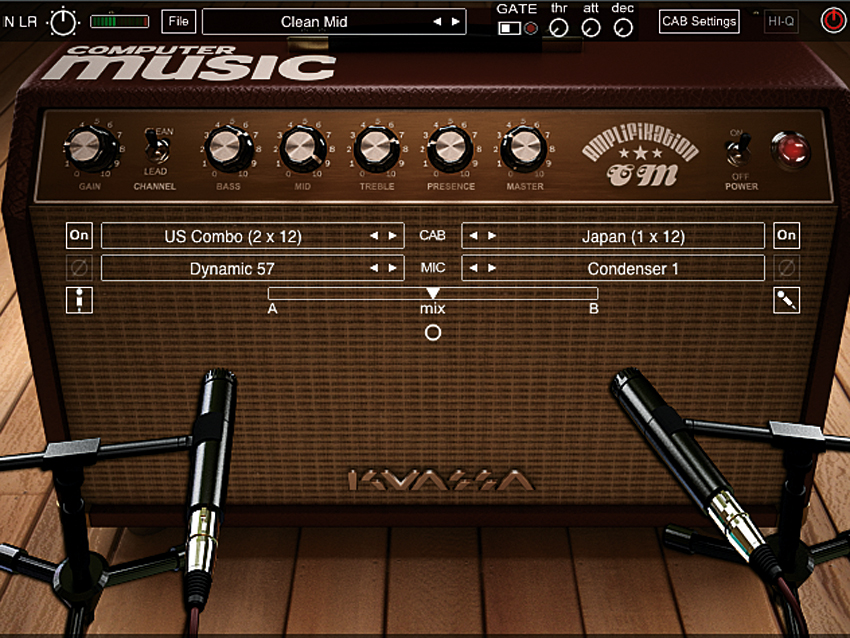12 vital vocal processing tips

12 vital vocal processing tips

12 vital vocal processing tips
No matter what kind of music you make, it's always worth thinking about incorporating a vocal.
That might sound like a daunting task, but it needn't be a full song with verses, choruses and a middle eight - just a single spoken word might be all it takes. At its most basic, this gives the listener something to remember the track by, identify with and mouth along to.
In the old days, a vocal could've been crucial in identifying that unknown track you heard last night, sparing you the humiliation of humming the bassline to an amused record store assistant who often wouldn't tell you even if they knew, as it would ruin the comedy. These days, a vocal gives the listener a chance to Google a lyric with the confident expectation of finding the track it came from.
Thus, a vocal could actually lead to punters buying your track (or at least finding it on YouTube and giving you a hearty 'Like' on Facebook), rather than simply forgetting they ever heard it.
But what if your singing voice is rubbish, your lisp isn't as cute as it sounds in your head, or you're a dancefloor-rocking monk who's taken a vow of silence? In all these cases, you might need to grunge up your vocal or disguise its source.
And sometimes you might just want to give a sampled vocal the edge or character it needs to suit your track, or to make one part of a vocal stand out from the rest. Or you might just be in the mood to mess around and make something mental!
Whatever your motivation, it's never been easier to change the character, style, gender or even apparent species of your voice. Here we're going to look at a variety of techniques to radically alter vocals, from old-school rave-style effects and vocoding to 60s tape-e tricks and plug-in harmonising.
Want all the hottest music and gear news, reviews, deals, features and more, direct to your inbox? Sign up here.
While some of them will sound quite familiar, you might not know how they're done - and we reckon a couple might even be completely new to you…
Ditch the dry
Reversed reverb is a great vocal processing trick, but you don't actually have to keep the original vocal in at all. It can be just as effective - sometimes more so - to use that initial swell to slide from one section of your track to another, or to introduce a big change.
Scratch that glitch
You don't need glitch plug-ins for glitch effects. Try chopping out a section of vocal that lands on the first eighth or 16th-note of a bar, shortening it a little so that there's a gap before the next 16th/eighth, then repeating that section for a beat, half a bar - any length that sounds good.
Keep it simple
Sometimes the simplest tricks are the best. If you want your recorded speech to sound spooky, moody, sexy or synthetically sci-fi, simply pitch it down a few semitones. You'll probably want to preserve the timing, so use a pitchshifting plug-in or algorithm in your audio editor or DAW.
Stack 'em up
Add some movement and variation to your vocal by placing certain words or phrases on their own channels and applying effects to them. Set a few channels up and you can try different effects out on the audio regions simply by moving them between channels.
Before you go
Sometimes a crazy vocal starts with the source. Try recording in sonically interesting places, like a bathroom or echoing hallway, using something weird to record with like a set of headphones plugged into a dynamic mic input (trust us, it works!), or with the mic pointing into the corner of the room.
Phone it in
One of the classic vocal effects is the ol' telephone voice trick. Use high- and low-cut filtering to chop out everything outside the 300Hz-3KHz range to simulate that boxy feel. Some saturation/overdrive can help too.
Phone it all the way in
There's always more than one way to skin a track, and you can get a rather convincing telephone effect without using a plug-in at all - by using your phone! Whether you record your speech or singing directly into your phone or simply hold it up to the speaker, you can get a really characterful tone this way.
Insert here
Vocal mangling is often as much about the order of your plug-ins as the effects themselves. For example, try using a reverb as an insert rather than on an auxiliary send, then insert other effects like a bit-crusher or chorus after it, so that the reverb tail is processed as well as the dry signal. You can then use a gate or expander to tame the results a little if necessary.
Drum 'n' voice
A handy side-effect of using samplers is that happy accidents can occur when a patch is loaded that doesn't 'match' the triggering MIDI part, particularly if the patch is a chopped up vocal and the MIDI is a drum pattern. The trick is to slice your vocal finely, disengage one-shot mode (this gives more rhythmically interesting results) and use very rhythmic MIDI patterns to trigger them.
Proof of life
Chorusing and pitchshifting are great on their own, but if you really want to sound like an inept kidnapper, you'll need to combine both. Start with one version of your vocal pitched up seven semitones and another five semitones down, then layer them over the original with all three at the same volume.
Reasonable clout
Reason users should try loading a sliced vocal into one of Reason's samplers and connecting an RPG8 Arpeggiator or Matrix sequencer for highly controllable chaos.
Pedal pusher
Almost anything can be made to sound more lively running through guitar pedals and amps, and vocals are no exception. In fact, 'amped' vocals sound so good that the Red Hot Chili Peppers started their latest album, I'm With You, with exactly that trick. You don't need real gear, though - just add Kuassa Amplifikation CM or any other amp/pedal emulation plug-in to your vocal channel.
Computer Music magazine is the world’s best selling publication dedicated solely to making great music with your Mac or PC computer. Each issue it brings its lucky readers the best in cutting-edge tutorials, need-to-know, expert software reviews and even all the tools you actually need to make great music today, courtesy of our legendary CM Plugin Suite.
